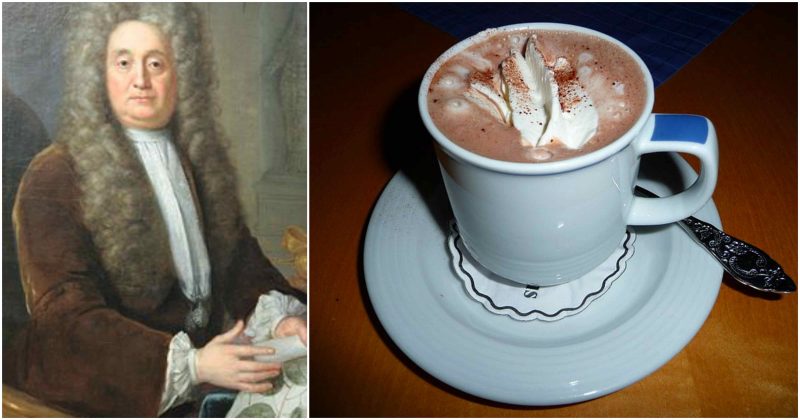It’s hard to imagine our cold winter days without wrapping our hands around a warm mug of hot chocolate.
It Started in Mexico As early as 500 BC, the Mayans were drinking chocolate made from ground-up cocoa seeds mixed with water, cornmeal, and chili peppers (as well as other ingredients)—a much different version from the hot chocolate we know today.

How Has Hot Chocolate Evolved Since Being Invented?
Hot chocolate’s journey, from its birth in ancient Mesoamerica to its current status as a global winter favourite, is a tale of cultural exchange, innovation, and adaptability.
Let’s embark on a journey to trace its fascinating evolution.
- Ancient Origins: Our story begins with the Mayans, around 500 BC. Their version, called ‘xocolātl’, was a mixture of roasted cacao beans, water, chillies, and herbs. Unlike today’s comforting beverage, this was a cold and frothy mixture with a spicy kick.
- The Aztec Influence: The Aztecs later adopted and adapted the drink, adding honey for sweetness and sometimes vanilla for flavour. They consumed this concoction, which they believed granted them strength and vitality, on special occasions and used cacao beans as currency.
- European Arrival: When Spanish explorers arrived in the New World in the 16th century, they brought the drink back to Europe. Here, the initial reception was lukewarm, but things quickly changed. The Spaniards started warming the mixture and adding sugar, making it more aligned with European tastes.
- The English Touch: Hot chocolate arrived in England in the 1650s. The English adapted it again, mixing it with milk instead of water. This richer, creamier version, sometimes laced with spices like cinnamon and nutmeg, became a luxury enjoyed by the elite in coffeehouses.
- Industrial Revolution: The 19th century heralded significant changes for hot chocolate. With the onset of the industrial revolution, the production of chocolate became more streamlined. The invention of solid-eating chocolate led to the development of cocoa powder, making hot chocolate easier to prepare at home.
- 20th & 21st Century: In the modern era, hot chocolate has become an accessible comfort drink available worldwide. Packets of instant hot chocolate mix can be found in supermarkets, while high-end chocolatiers craft gourmet versions. Today’s hot chocolate can also come flavoured with peppermint, orange, white chocolate, and even salted caramel.
How is Hot Chocolate Enjoyed Today?
The rich aroma of hot chocolate, evoking memories of cold winter evenings and heartwarming moments, continues to be a cherished beverage across the UK and beyond.
So, how do Brits people worldwide enjoy this luscious beverage in the present day?
- Classic Cocoa: For many, the ideal hot chocolate remains the classic version – a perfect blend of cocoa, milk, and sugar, whisked to velvety perfection and often topped with a dollop of whipped cream or a sprinkle of cocoa powder.
- Gourmet Varieties: High-end cafes and chocolatiers often offer artisanal versions. These might feature single-origin chocolates, unique spice blends, or even liquors for an adult twist.
- Flavoured Hot Chocolates: Modern palates crave variety. Hence, today, you’ll find hot chocolates infused with flavours such as mint, hazelnut, caramel, chilli, and even lavender. Each addition offers a unique twist to the traditional taste.
- Dietary Adaptations: With increasing dietary preferences and restrictions, there are now versions suitable for vegans (using almond, soy, oat or other non-dairy milks), sugar-free alternatives for diabetics, and even gluten-free options.
- The ‘Instagrammable’ Mug: In the era of social media, presentation is key. Hot chocolate adorned with marshmallows, rainbow sprinkles, chocolate shards, and even gold leaf makes for an ‘Instagram-worthy’ snap.
- Festive Occasions: Special occasions, particularly around Christmas, see a surge in hot chocolate consumption. Festive versions might include spices like cinnamon and nutmeg or even a splash of Bailey’s or brandy for good cheer.
- DIY Kits: Many retailers offer ‘make-your-own’ hot chocolate kits, complete with chocolate sticks or buttons, marshmallows, and sometimes even a festive mug. They make for popular gifts and a fun at-home experience.
- International Influences: As the world becomes more connected, Brits are introduced to different versions of hot chocolate. For instance, the thick Spanish ‘chocolatada’ or the Italian ‘cioccolata calda’ have also found their enthusiasts here.
The history of hot chocolate
FAQ
Did Jamaica invent hot chocolate?
Did the Mexicans discover hot chocolate?
Did the Aztecs create hot chocolate?
Who was the first person to invent chocolate?
Where did hot chocolate come from?
The earliest forms of hot chocolate were enjoyed by the Olmec, Mayan, and Aztec cultures. However, their chocolate drink was neither hot nor sweetened. Instead, it was lightly frothed and mixed with spices and flowers for flavor. Missionaries who later came to the area brought the drink back to Spain,
Does chocolate cause heartburn?
Chocolate contains caffeine, cocoa, and plant chemicals that can all trigger heartburn. Also, a chemical in cocoa relaxes the lower esophageal sphincter, making it easier for stomach contents to leak into your esophagus. Other food that might trigger heartburn are alcohol, carbonated beverages, cheese, chili powder and pepper and citrus fruits, like grapefruit, lemons and limes.
When did hot chocolate first come to America?
Hot chocolate was first brought to North America as early as the 17th century by the Dutch, but the first time colonists began selling hot chocolate was around 1755. Traditionally, hot chocolate has been associated with cold weather and winter in the United States and Canada.
When did hot chocolate become popular?
Sweet hot chocolate and bar chocolate were yet to be invented. After its introduction to Europe, the drink slowly gained popularity. The Imperial Court of Emperor Charles V soon adopted the drink, and what was then only known as “chocolate” became a fashionable drink popular with the Spanish upper class.
